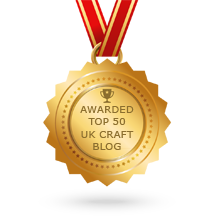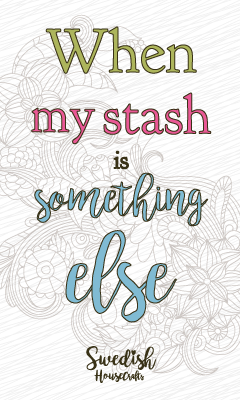Prismacolor Pencils in Details
Hello,
Looking back into my files I found this sleeping beauty tutorial images that I thought I lost while cleaning my files. I really hate when I loose files and images, but how lucky I am today and I hope you find it easy and useful.
This tutorial is about using Prismacolor pencils with White Spirit. It dissolves colours to show transparency. Great for easy shading. In other countries it is called mineral spirits, turpentine and other names like petroleum. You can use it mainly to dissolve non-water based paints, like oil colours (non-water based ones) and wax based too like Prismacolors and Derwent Soft colour pencils which are alternative to Prismacolor pencils. Don't forget Spectrum Noir pencils too. If would like more information about it you can google it out.
let's start...
Here I used Simply Gorjuss stamp on regular Daler Rowney watercolour paper. I stamped with Versafine Onyx Black ink pad. It is important to use water-resistant ink for the stamp, alternative to Versafine is Archival ink, Memento and all ink pads that is confirmed to be water-resistant.
Remember that it is ok if you don't get it at the beginning because this tutorial is repetitive and I am pretty positive you will understand it at the end.
The Skin:
I used Prismacolor Peach (PC939). I started with drawing a wide line around the face, then I damped the edge of the paper stump in the white spirit. With a circular motion over the coloured area dragging the colour to the white area. The dragged colour get lighter and lighter as it is dissolving. The circular motion prevents the colour from forming unwanted lines. Now the paper gets wet. You need to wait until the dissolved colour spreads on the area as it continues to dissolve until it dries, just seconds we are talking about here. Look here in the two images: the one to the left was taken immediately after colouring and the area was totally wet. There image on right is about 20 seconds after.
Now the face colour has settled down this is final result. You can add some rosy colour for the cheeks. It always depends on how much colour you add and how much soluble you add, it is a relative relation that you need to balance, this is what most beginners miss. It is learned by training anyway, so keep training and you'll be just fine. Repeat this on the hands.
Let's say the colour didn't spread totally, and coloured area was completely dry with lots of white space that you didn't like. You can fix it by repeating the process but colour in a closer area and very light pressure so not to add much colour and disturb the gradient.
The Hair:
The hardest part is how to shade a wavy hair. Gorjuss stamps tell you how to shade from the lines. Here I blended two colours: Dark Brown (PC946) for the dark areas and Putty Beige (PC1083) to the light areas. The stem areas usually are the dark areas and the bumps are light. This is not always the case but usually this works just fine. Here in the image you can see that I coloured them leaving a white space between the two colours. Then with the damped paper stump I dragged the Dark Brown towards the Putty Beige and when I am done with all darks I used another stump and dragged the Putty Beige towards the Dark Brown, to prevent colour contamination. Alternative, you can start with the light colour and then do the dark with the same stump.
When using the stump on hair, you do not need to go in circular motion because if lines show then this is hair lines. About the lines, it depends usually of the paper you use, lines show less on watercolour paper.
The result of the hair when it completely dired and blended.
Clothes:
The colour to the jacket was Periwinkle (PC1025). You can use any other colour if you like.
The same way, I drew thick lines as I wished to have dark and in circular motion I dragged the colour around. You can see clearly where I drew the lines and how it ended. You can notice the difference of shading and this is caused of multiple lines and blending times as I did each area separately to focus on one area each time. By saying area I mean the close space; each arm is an area, upper half of the jacket is another area and so on.
Using Olive Green (PC911) and drawn lines on the trousers.
Then again I dragged the lines from dark to light area and this I did on both sides. I mean that you drag the dark colour to the middle of the white and then from the opposite side and again to the middle of the light area. that is how you keep the light are lighter.
By now, you may have got the idea how it works and this is in general is the tutorial about. The following is just extra explanation:
The Watch:
Using metallic pencils is challenging. So creating illusions is easier. I used Silver (PC949) and Metallic Gold (PC950) to create it. Here in the image it does not show clearly the metallic effect unfortunately but it is clearer in the final image down.
The Background:
I used True Blue (PC903) to colour the background in extremely light pressure. and I used again the Dark Brown for the floor. I added a darker line to set a difference between the floor and the background. In circular motion I blended the background but not the ground, you can guess how I did it by now, right?
Then I added more details to the image where it was needed and here it is ready.
I hope this was enjoyable tutorial. Subscribe for more tutorials with other pens and much more.
Items Used:
The materials are from different stores. You can also find them in your local art supplies. The White Spirit is not the same manufacturer that I used but it doesn't matter it is the same and this one is high quality. Some of the items are now on sale in those shops.
The materials are from different stores. You can also find them in your local art supplies. The White Spirit is not the same manufacturer that I used but it doesn't matter it is the same and this one is high quality. Some of the items are now on sale in those shops.


























0 comments
If you want to make someone happy today, what would you say? Leave a word to the team :D